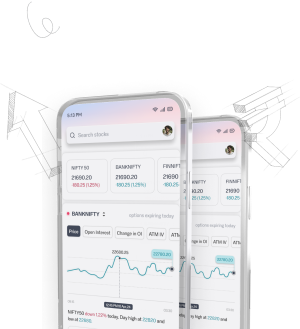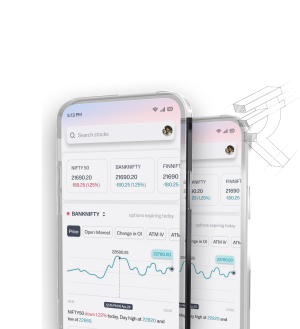How to Pick Stocks for Intraday Trading
Traders, the proper selection of stocks for intraday trading makes much difference in your trading success. We would focus on the most important parameters for picking stocks in this regard. Equipped with this information, you should have no problem recognizing at one glance the best stocks to trade for any one particular day. We will consider high liquidity, suitable volatility, general trends of the market, and why technical indicators are important to make informed decisions. This guide is a great fit for both new and seasoned traders looking for how to make wise decisions that yield better trading results.
Key Takeaways
- Liquidity: This is the ingredient important for a market to be entered and exited easily.
- Volatility: High volatility can bring both opportunities and risks.
- Market Trends: Understand trends to identify trading strategies.
- Technical Analysis: Helps in enhancing the decision while trading.
- Risk Management: Always keep a stop-loss in place to avoid losses.
- Chart Patterns and News Impact: May cause intraday trading opportunities.
Understanding Intraday Trading
Intraday trading, also known as day trading, is the act of buying and selling stocks on the same day. The goal is to gain from the slight changes in short-term prices while avoiding the risks associated with overnight market movement.
Leverage in Intraday Trading
Leverage is an important term in intraday trading. A trader can lend money, so that he has more money available to spend on a particular stock. Although leveraging can raise potential profits, the risks will definitely increase. Be very clear with regards to the terms of your broker.
Technical Analysis in Intraday Trading
An intraday trading strategy cannot be complete without a study of technical analysis. It constitutes a study of price trends and market momentum through Moving Averages, Bollinger Bands, and the Relative Strength Index. These indicators help in arriving at buy/sell decisions.
Stock Selection Criteria
For intraday trading, medium to high volatility stock would be better as they offer good exclusivity and substantial price movements, which in turn provides good trading opportunities. Liquidity is also very important for the execution of trades.
Benefits and Downsides of Intraday Trading
Benefits:
- No delivery charges
- Automatic position closure with set limits
Downsides:
- No ownership of shares
- Potential for significant losses
Key Factors in Intraday Trading
- Liquidity: High trading volumes ensure easy entry and exit.
- Volatility: Provides opportunities but also increases risks.
Importance of Liquidity in Trading
Liquidity is important in intraday trading. High liquidity will give one the leverage to trade without problems that much and will aid in the selling and buying of stocks. This will make the trader adjust well in the market without much fluctuation in price security.
Ways to Calculate Liquidity
One of the ways to calculate liquidity is through bid-ask spread, trading volumes, market depth, and price resilience.
| Stock | Average Trading Volume | Bid-Ask Spread | Liquidity Rating |
|---|---|---|---|
| Reliance Industries | 12 million | 0.15 | High |
| HDFC Bank | 8 million | 0.10 | High |
| Infosys | 7 million | 0.08 | High |
Why Volatility Is Important
Volatility is the fuel on which the interday business works. It is the rate of movement of the stock price that generates the small-time earning opportunities. But those which have greater volatility have greater risk too. Hence it is important to take the right approach, where opportunities perfectly match risk.
How to Find Volatile Stocks
There are many ways to find volatile stocks. Below are some. • Price movements over time, scan for trends in these movements`.
- Price actions can be analyzed using statistical measures like Average True Range
- Search for breakouts of indicators that calculate the momentum of price
Market Trends in Day Trading
Market trends are the fundamentals of transmitting a successful day trading. One must be able to confirm whether the market is bullish or bearish to prepare the strategy accordingly.
###Bull and Bear Market
- Bull Market: It is characterized by an uptrend. It results from positive economic indicators and investor optimism.
- Bear Market: A downtrend, poor economic forecasts, and rising investor anxiety define a bear market.
Sector Performance
Sector performance helps pick the right stocks to trade.
| Sector | Performance Indicator | Current Trend |
|---|---|---|
| Technology | +3.5% | Bullish |
| Healthcare | -1.2% | Bear |
| Financials | +2.8% | N |
| Consumer Goods | +0.5% | Bullish |
Intraday Trading Based on Technical Analysis
Technical analysis is an integral component of the fast-paced world of intraday trading. For deriving the price pattern and forecasting the future scenario, this study is helpful.
Chart Patterns in Detail
Chart patterns like a head-and-shoulders pattern, flags, and triangles play a very crucial role, as identification of these patterns helps us properly take trading decisions.
| Pattern | Market Behavior | Trading Signal |
|---|---|---|
| Head and Shoulders | Reversal | Sell after confirmation |
| Triangle | Continuation or Reversal | Buy on breakout for continuation |
| Flags | Continuation | Buy after breakout |
| Double Top | Trend reversal | Sell upon confirmation |
Trading with Indicators and Tools
Indicators are things like moving averages and momentum oscillators that confirm the probability of your trading ideas. Combining these with strong chart patterns strengthens your strategy, making you more prepared for execution when the market changes occur.
Stock Trading Volume Analysis
Analysis done on volume in stock trading helps to measure the market activity and real-time liquidity. By monitoring the trading volume, you can actually see how stock prices move and understand the health of a market.
Understanding Volume Trends
Where there is high trading volume, it indicates there is more liquidity, especially during peak trading hours. That has a constant average daily volume that can help monitor trading opportunities and better highlight significant market changes.
Volume as a Confirmation Tool
Volume trends can corroborate market moves. Price increases on increased volume indicate a healthy market, as price decreases on large volume confirm a declining market. This assists in making sensible trading decisions.
Understanding Resistance and Support Levels in Intraday Trading
When it comes to intraday trading, the most important input is given by the resistance and support levels. These price levels can indicate a reversal from the trend for entry or exit.
| Characteristic | Levels of Support | Levels of Resistance |
|---|---|---|
| Price Behavior | Price tends to bounce off this level | Price tends to reverse or hesitate at this level |
| Trading Volume | High buying interest indicated | High selling interest indicated |
| Market Sentiment | Indicates potential bullish reversal | Indicates potential bearish reversal |
| Psychological Factors | Round numbers tend to act as support | Round numbers tend to act as resistance |
News-Sensitive Stocks for Intraday Trading
News-sensitive stocks offer different opportunities for intraday traders. News can swing the prices of stocks, therefore offering volatility that intraday traders prey on.
How to Trade News-Driven Stocks
- Keep News on Your Radar: Be informed on every bit of news.
- Pre-Trading Homework: Learn how stocks tend to react to such news in the past.
- Risk Management: To safeguard from sudden market turns.
- Use Liquidity: To trade through liquid stocks.
Criteria impacting Stock Selection for Intraday Trading
Each stock to be taken for intraday trading needs to meet criteria such as liquidity, volatility, market trend and technical analysis.
Key Determinants of Stock Selection
| Factor | Effect |
|---|---|
| Liquidity | Guarantees a smooth entry and exit. |
| Volatility | Moderate volatility increases the opportunity for profit, while too much volatility is dangerous. |
| Correlation | Equities that move in tandem with at least sectors or indexes make decisions easier. |
| Technical Analysis | Helps decide when to be in and out of a stock through chart patterns. |
| News Sensitivity | Takes advantage of the way the market reacts to news announcements. |
Risk Management in Intraday Trading
Ease of risk management is another tool that can be used to achieve success in intraday trading. It protects your capital and allows you room to build better trading results.
Ordering Stop Loss
Such trading orders help manage your risks in trading. It helps one plan an exit at a pre-determined price, thus helping in the management of probable losses which save your capital.
Portfolio Diversification
Diversification of assets always mitigates the risk involved and offers an opportunity to book gains from different market trends.
Entry and Exit Strategies for Intraday Trading
Entry and exit the market is one of the most important strategies in intraday trading. This is useful in pocketing the profit while limiting losses.
Perfect Entry Points
A good entry point is a technique that depends on market trends and is best achieved through technical analysis, namely moving averages and RSI.
Exit Strategies for Maximum Gains
- Just Take Your Profits On A Timely Basis: Establish targets for profits.
- Use Stop-Loss Orders: Ensure capital defense and exit on predetermined points.
- Trailing Stops: Guarantees the profit you've locked in as the market moves in your favor.
| Type of Strategy | Description of Strategy | Best to Use |
|---|---|---|
| Breakout Trading | Taking positions close to critical price levels | A stock about to exit the break-out point |
| Trend Trading | Taking positions aligned with proven uptrends/downswings | Long-term stocks with steady action |
Advantages of Top Gainers and Losers in Intraday Trading
What more the short-term trader requires than an indication of who the front-runners in the market are.
How to Know Which Stocks are Moving
- Track record: Monitor big price change stocks for trade.
- Trading volume: The most volatile stocks with high trading volume are to be used for day trading.
Disclaimer
The content provided is for educational purposes only and does not constitute financial advice. For full details, refer to the disclaimer document.




